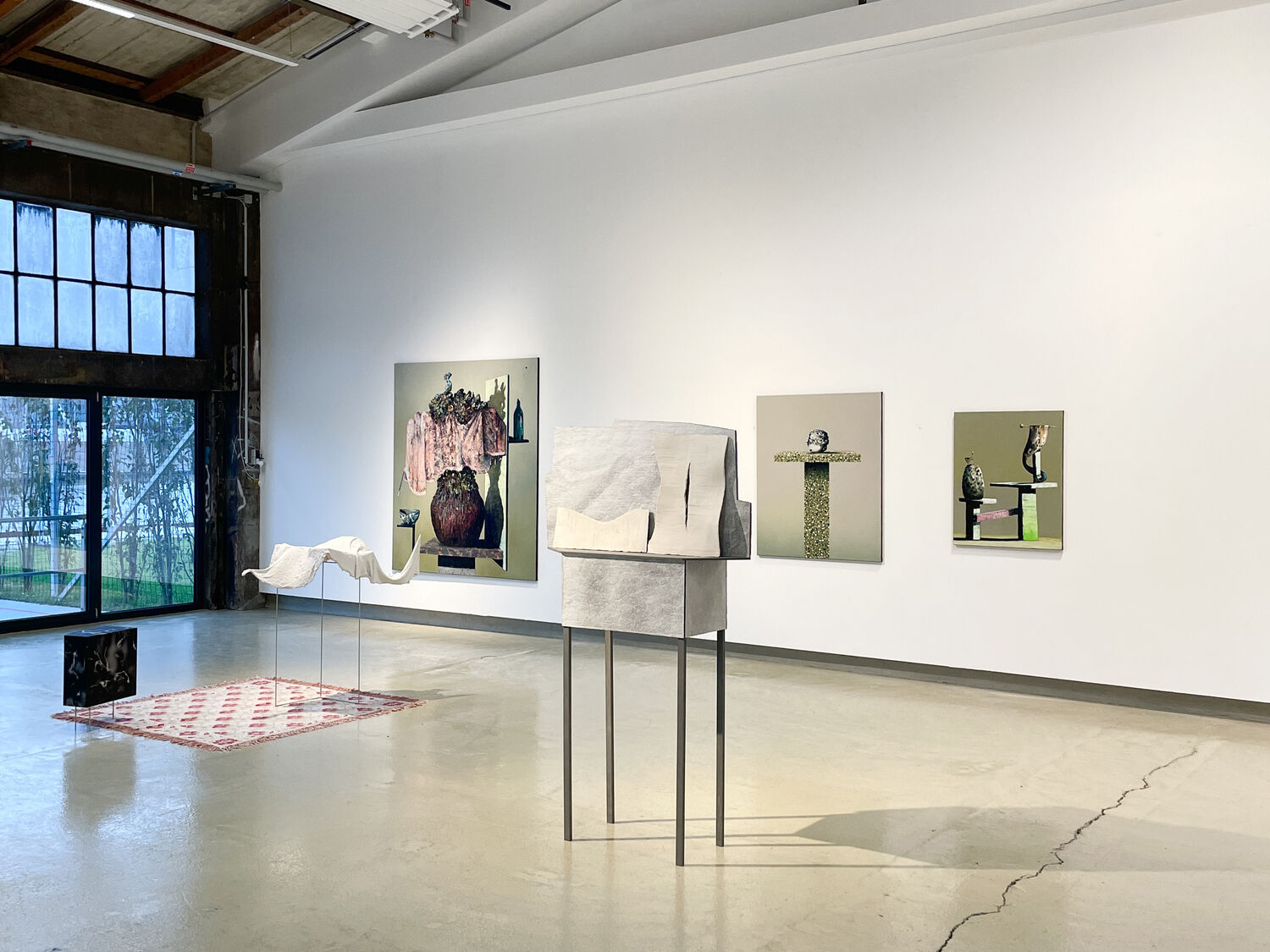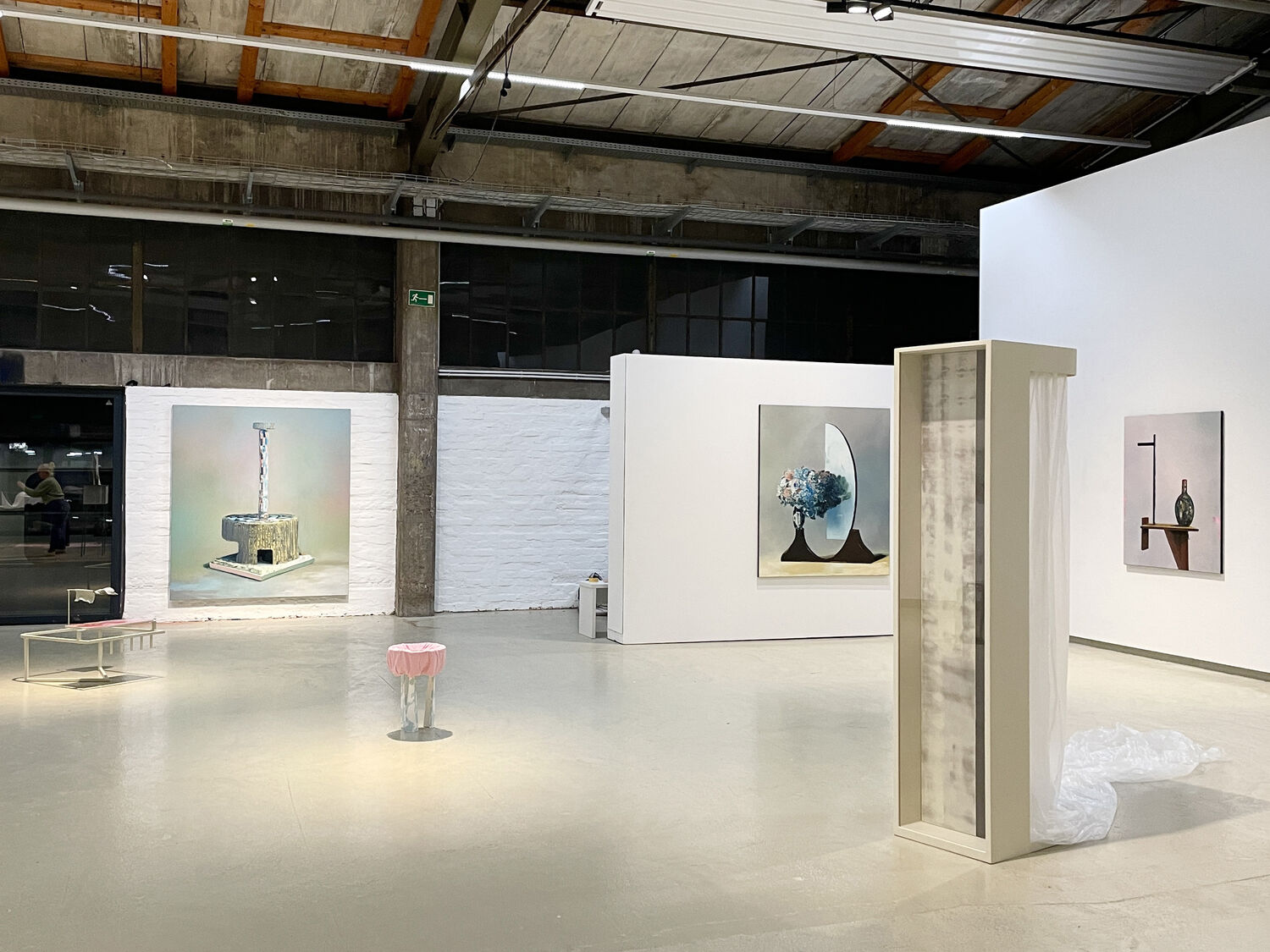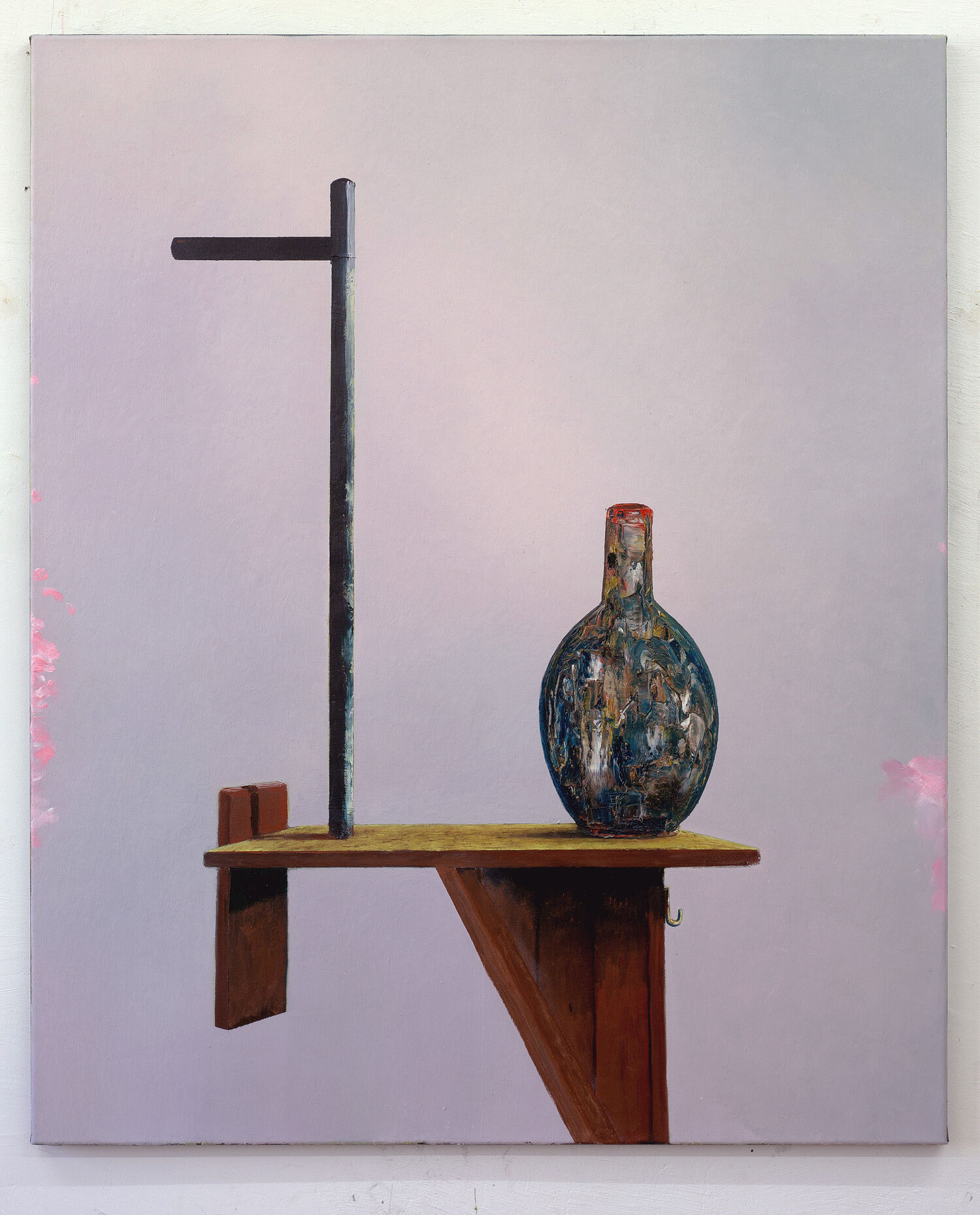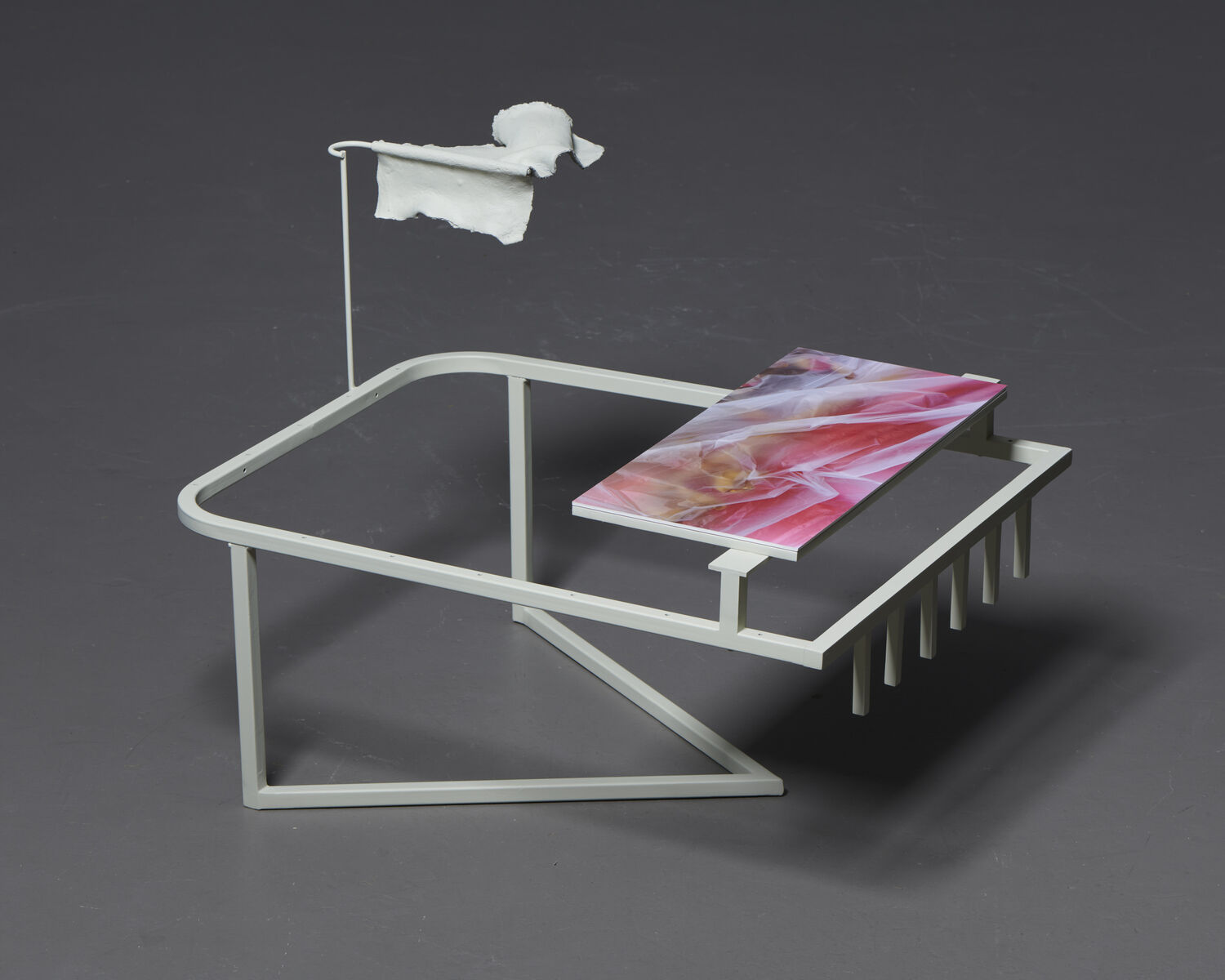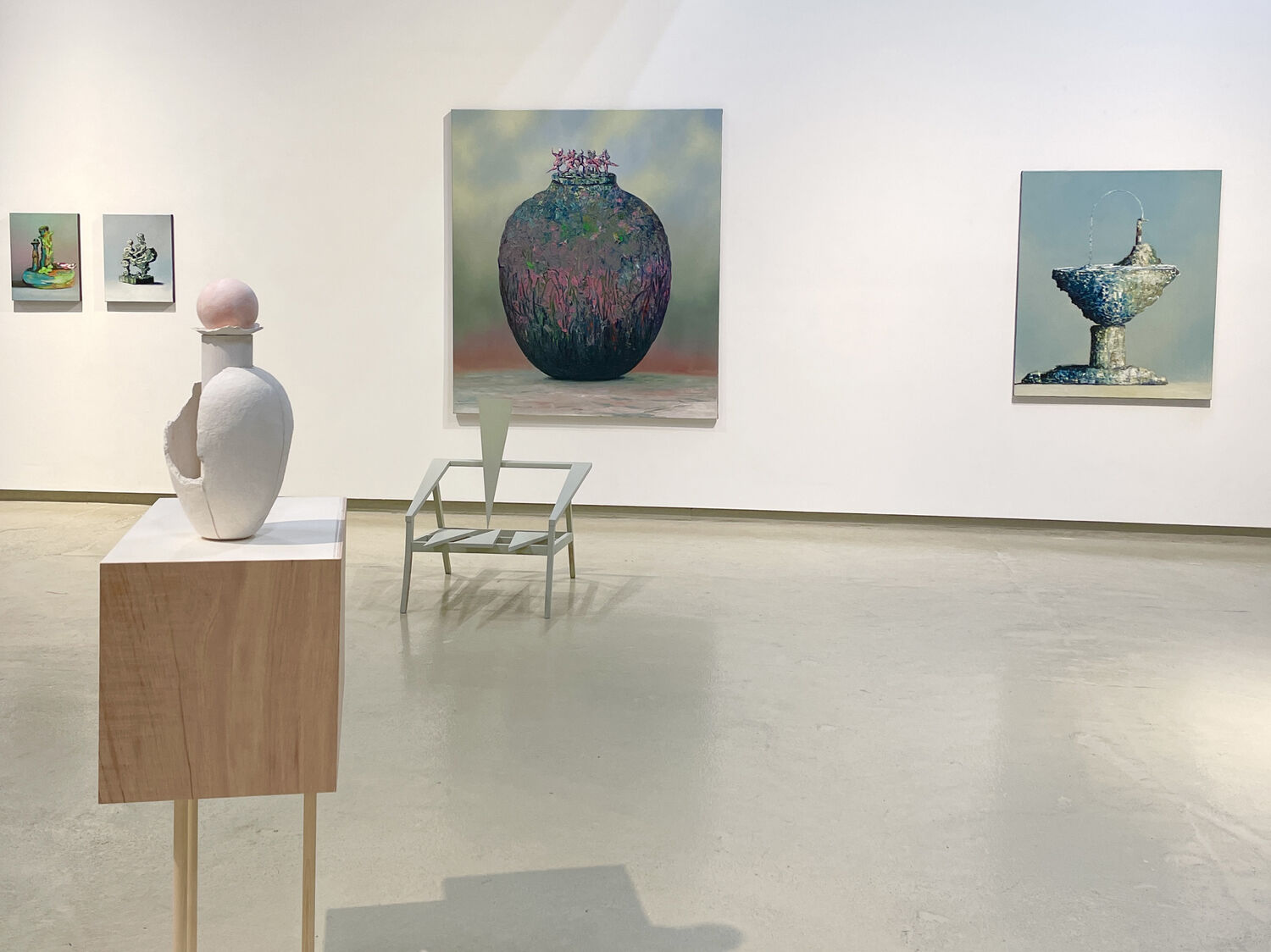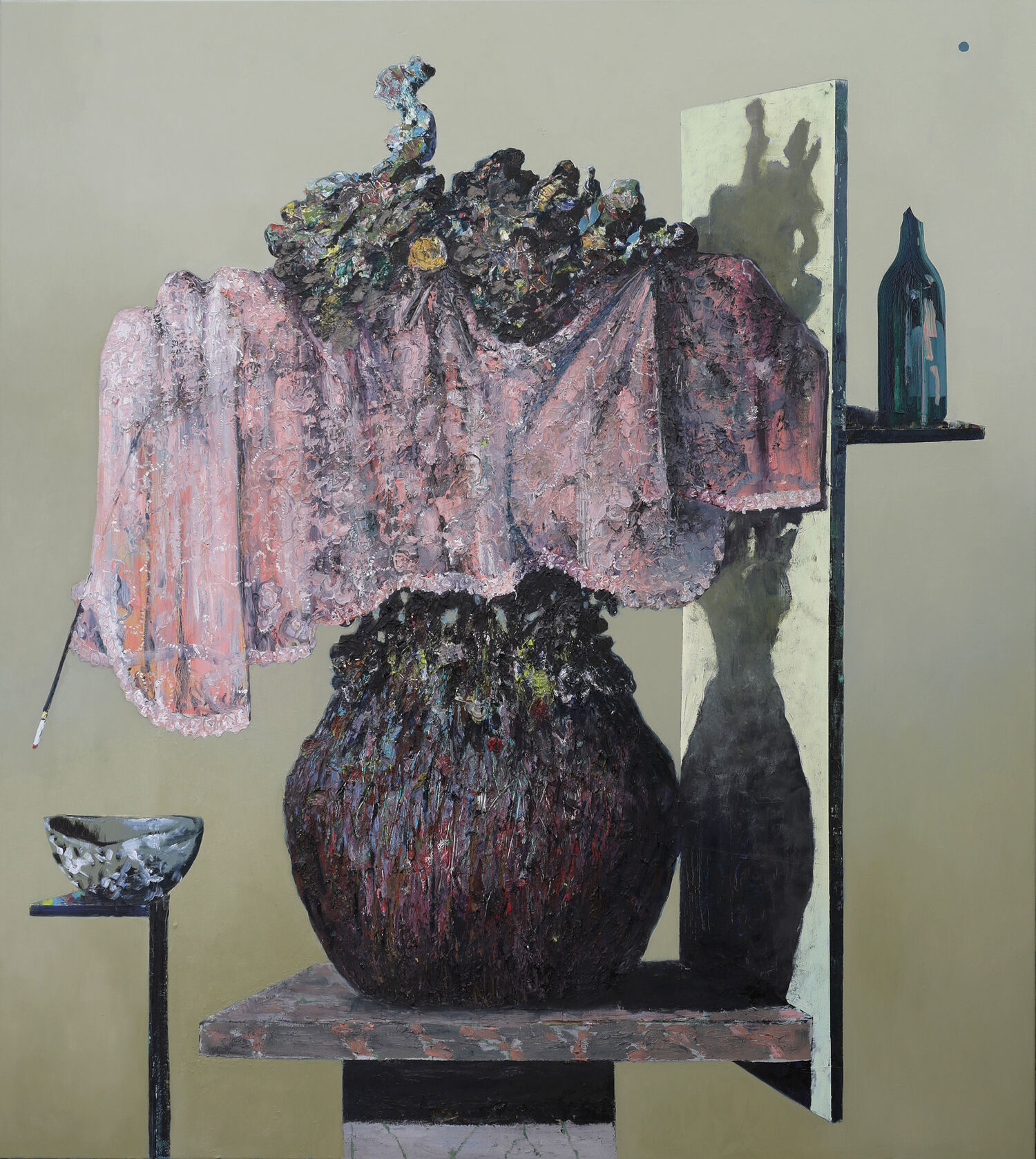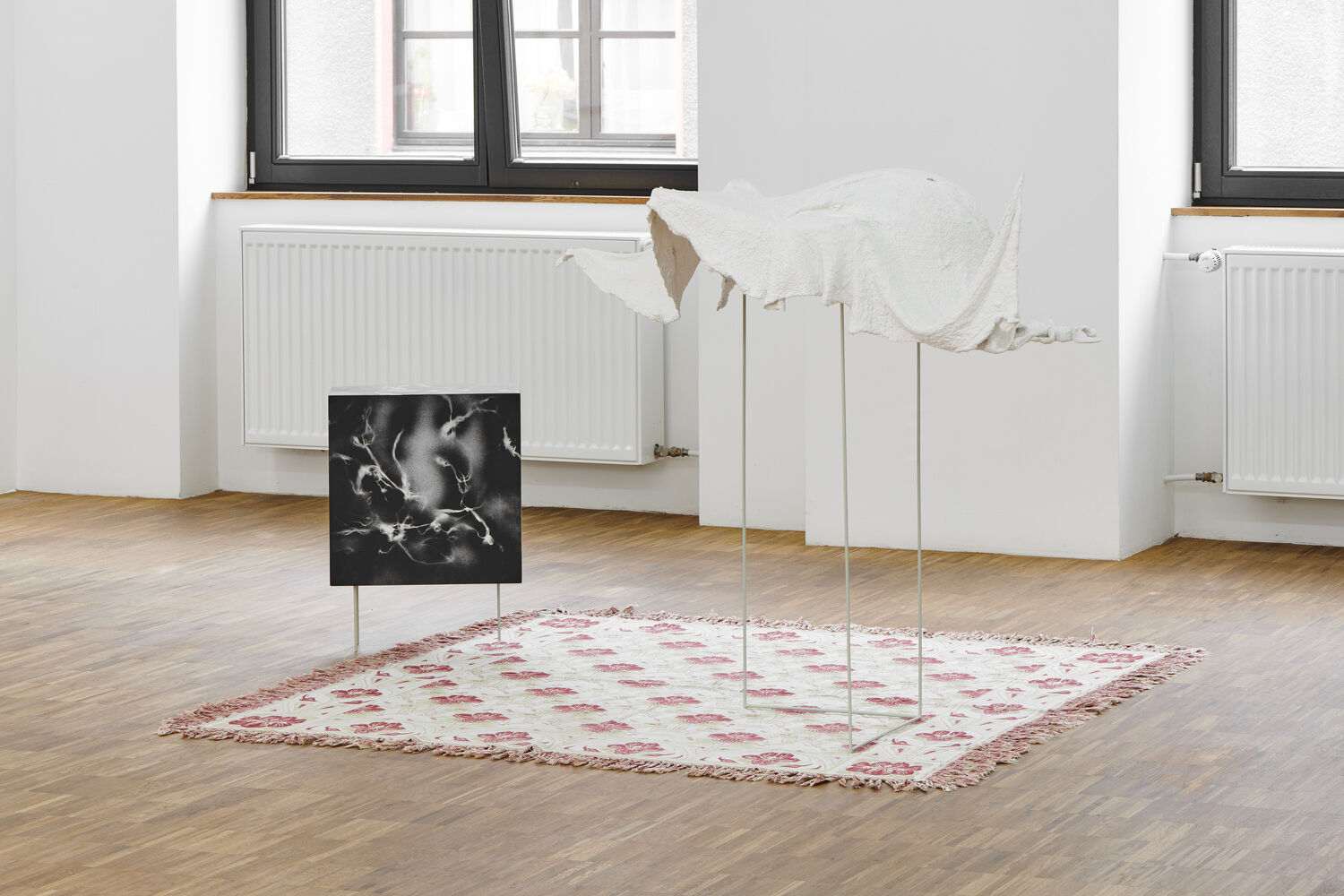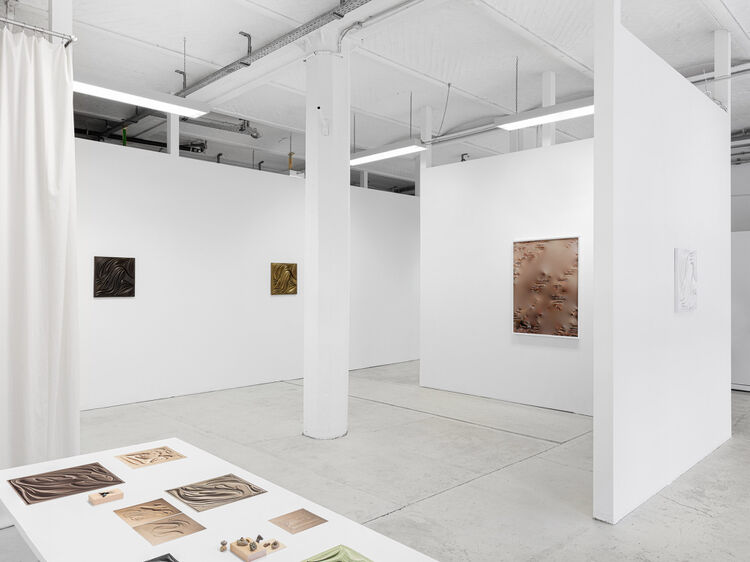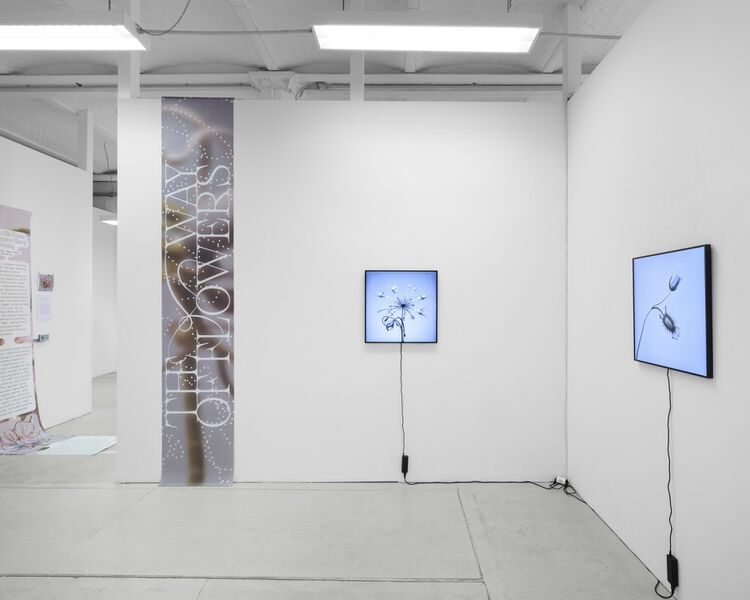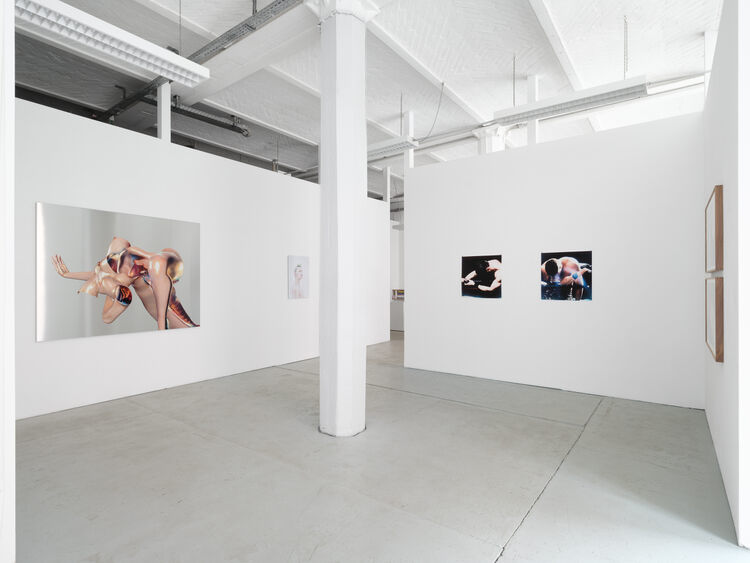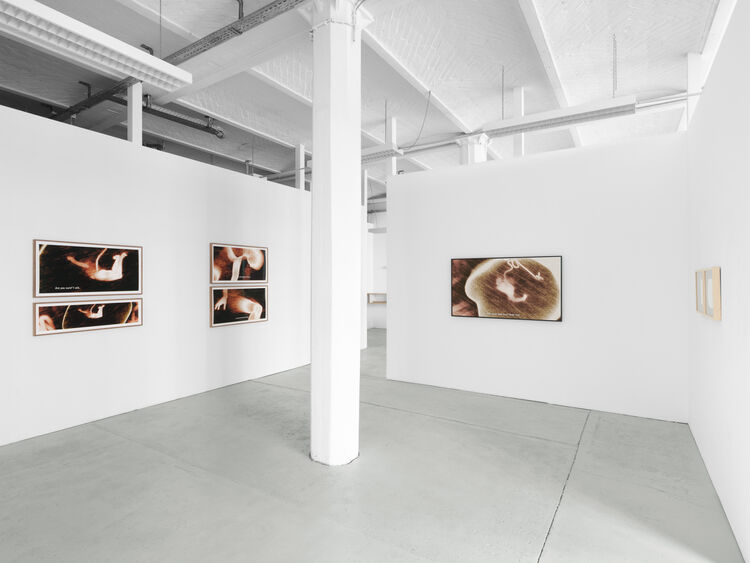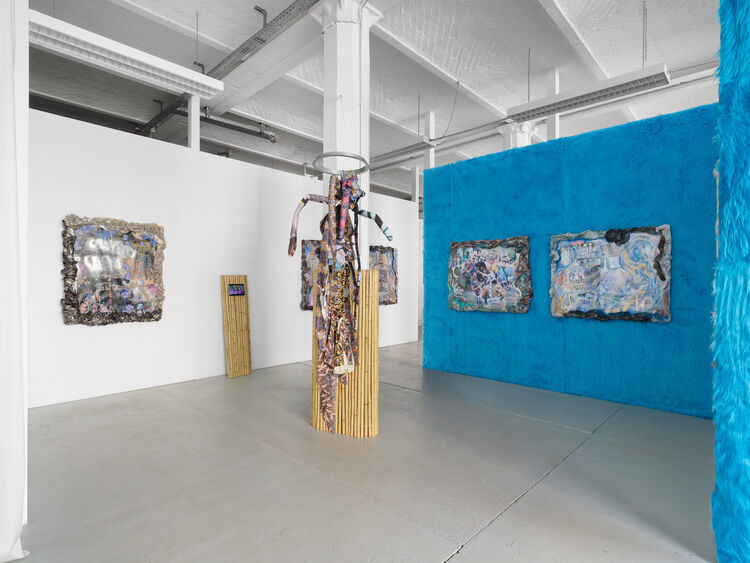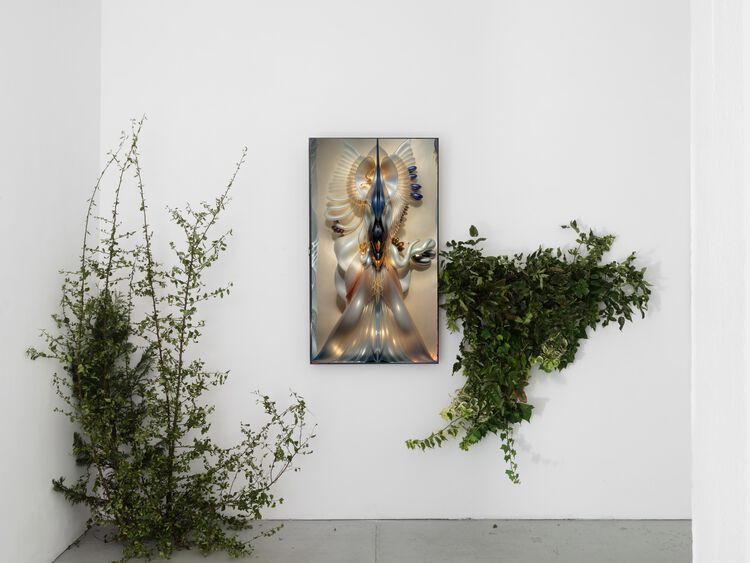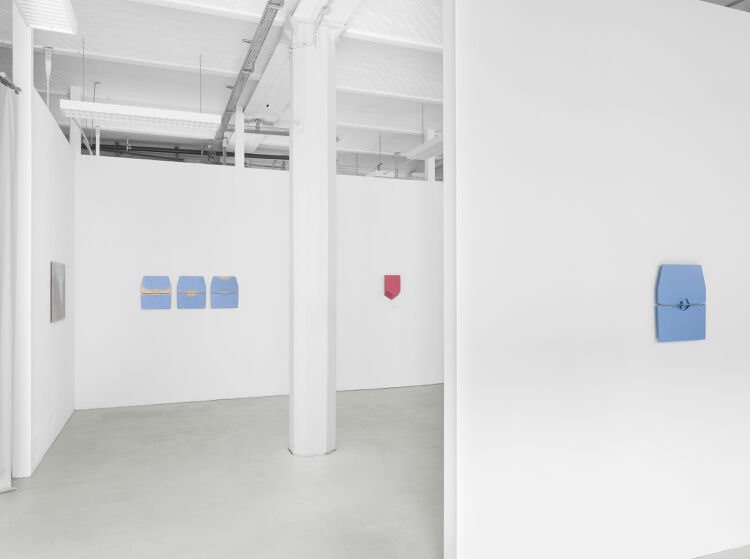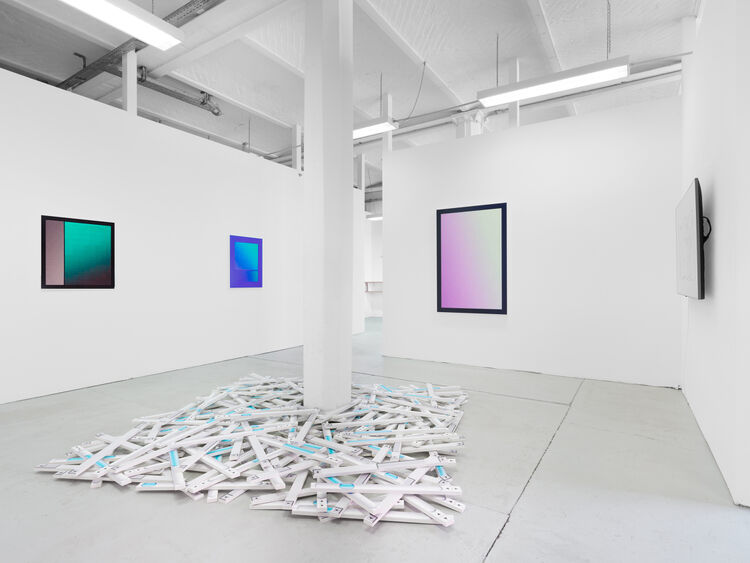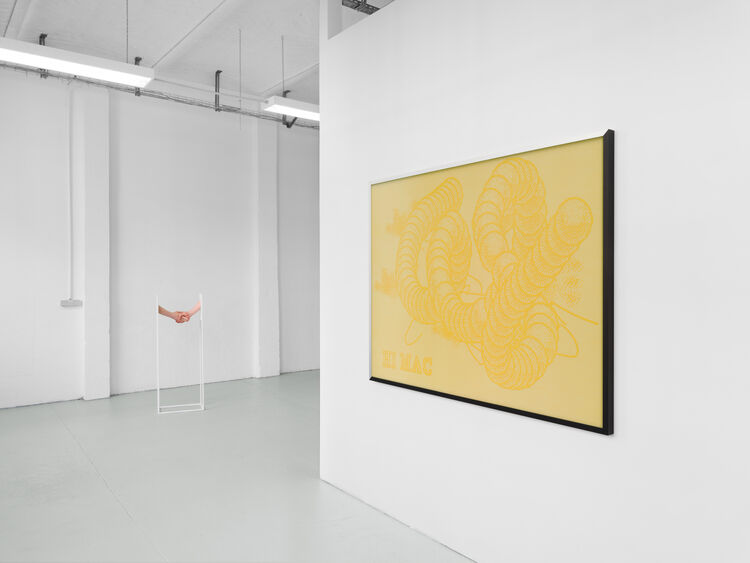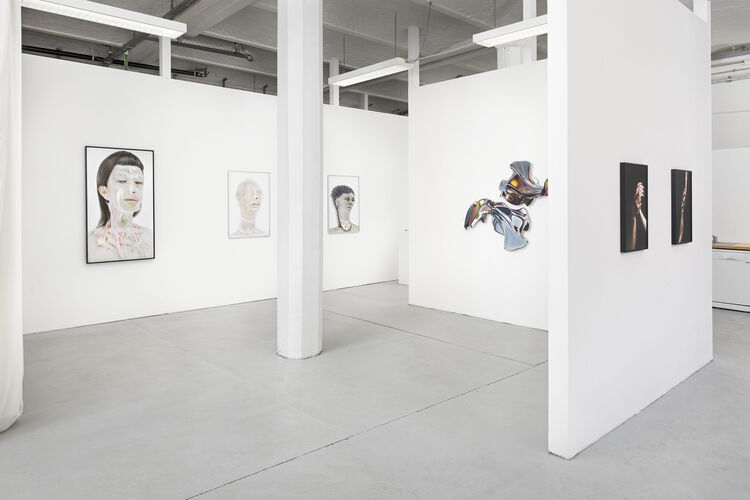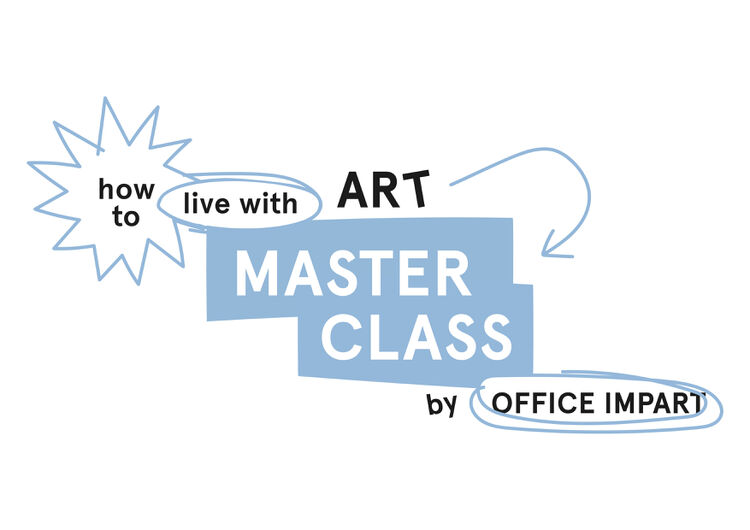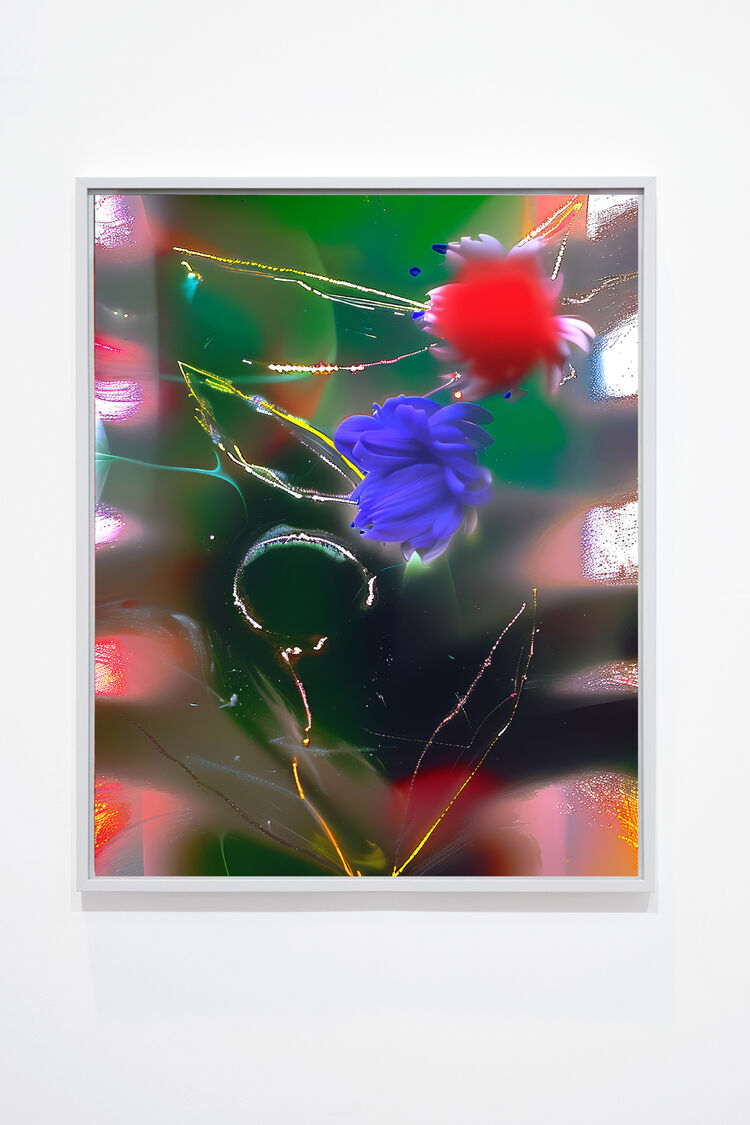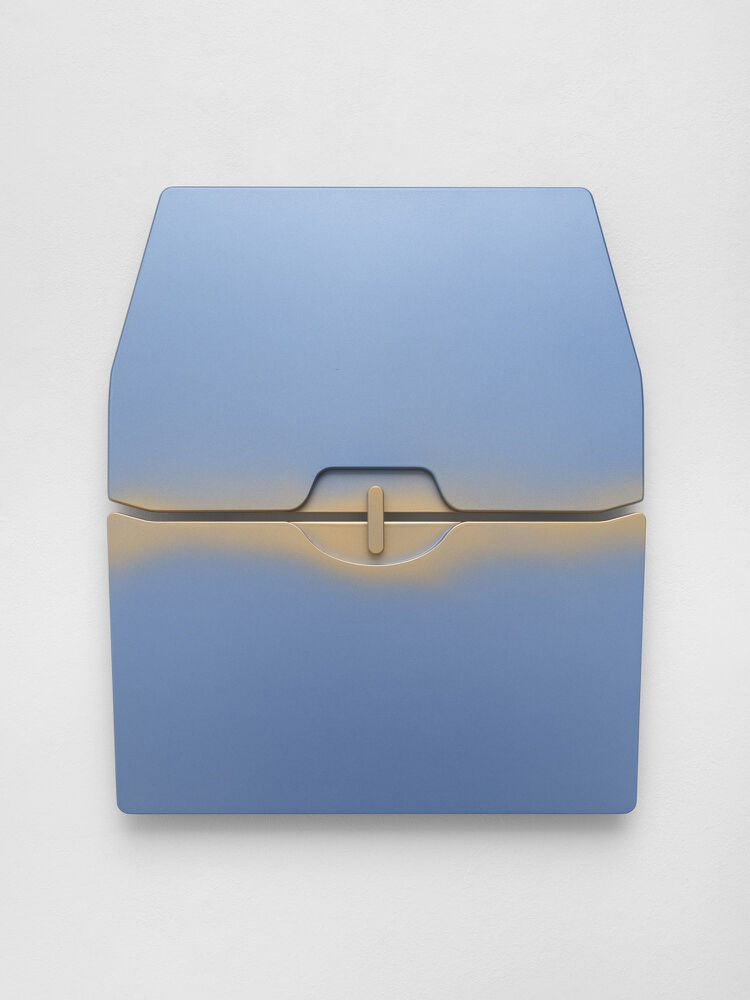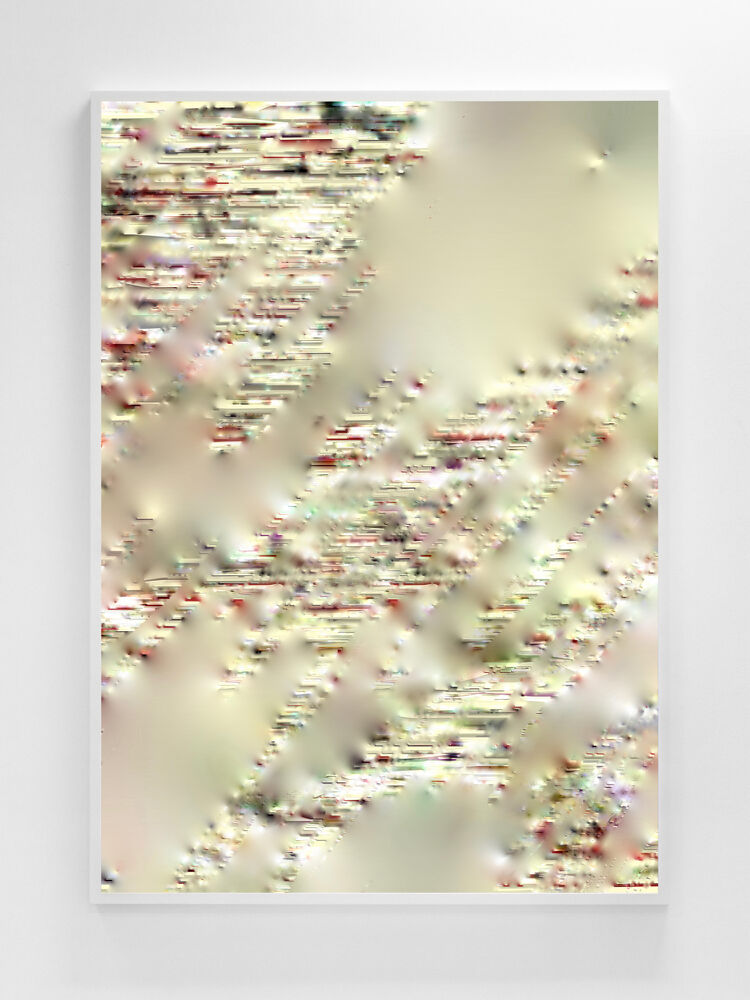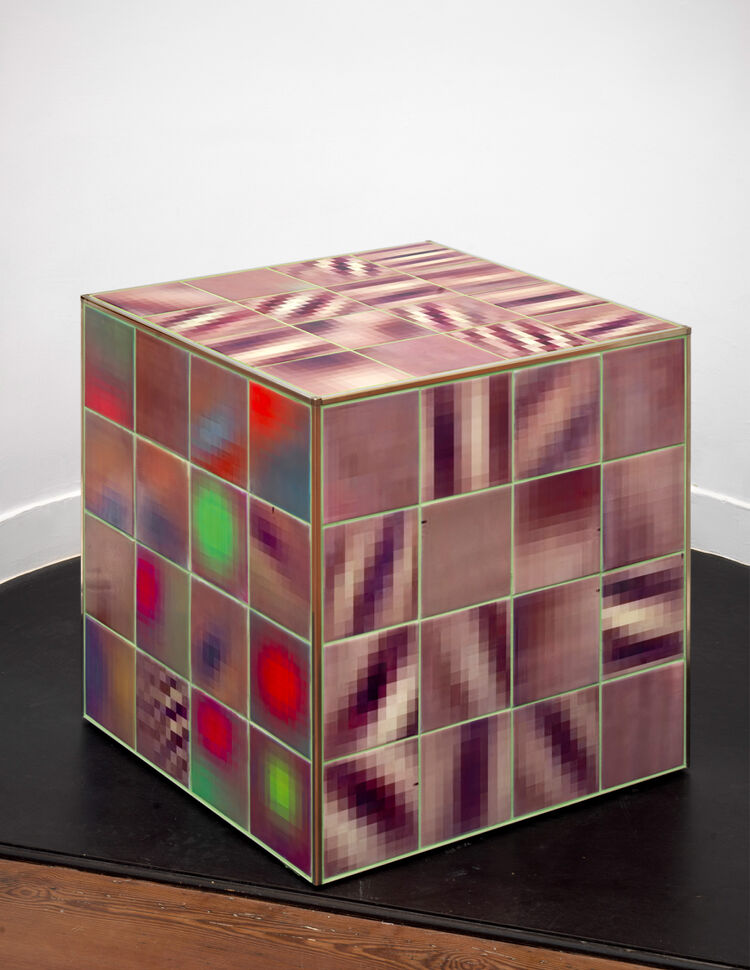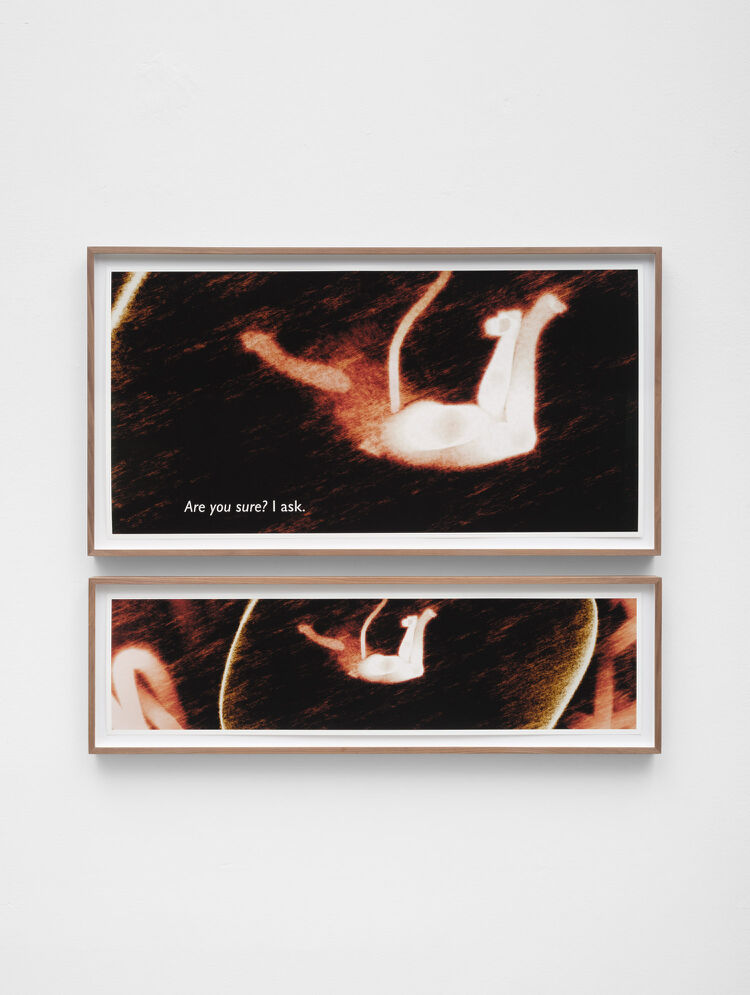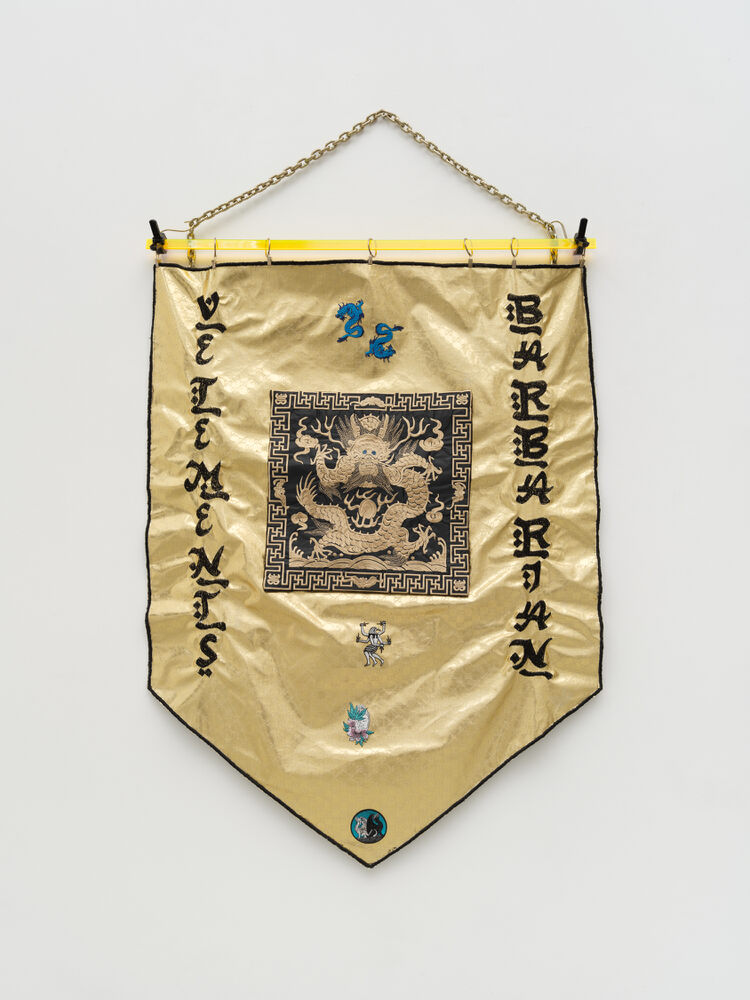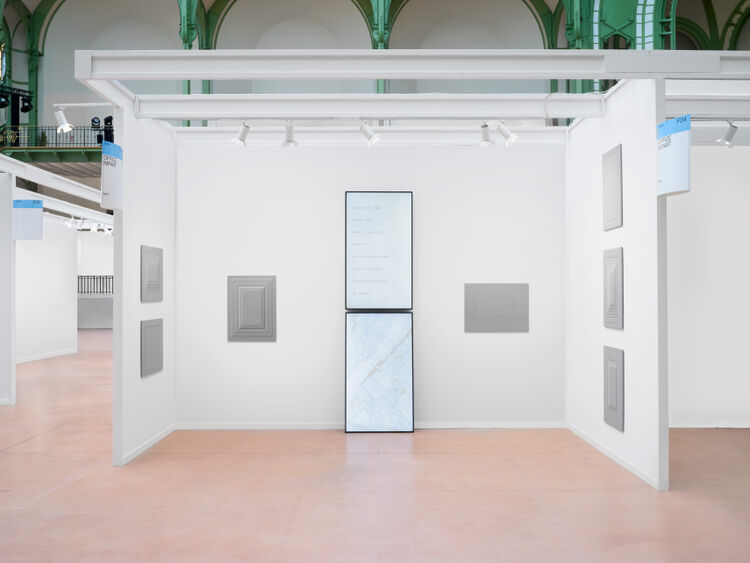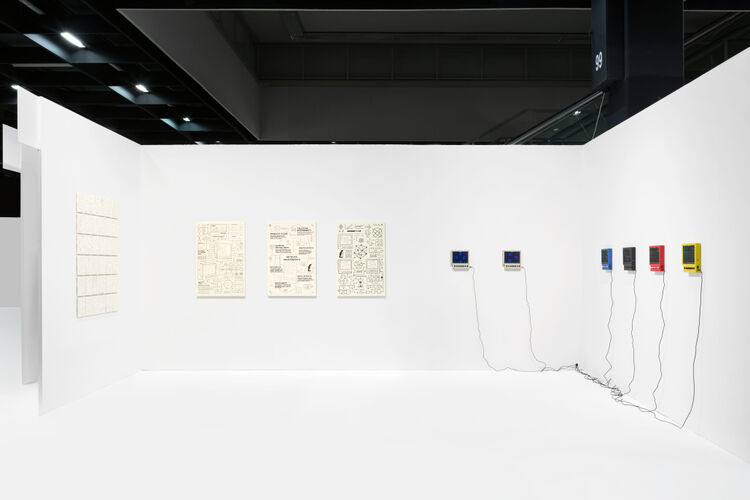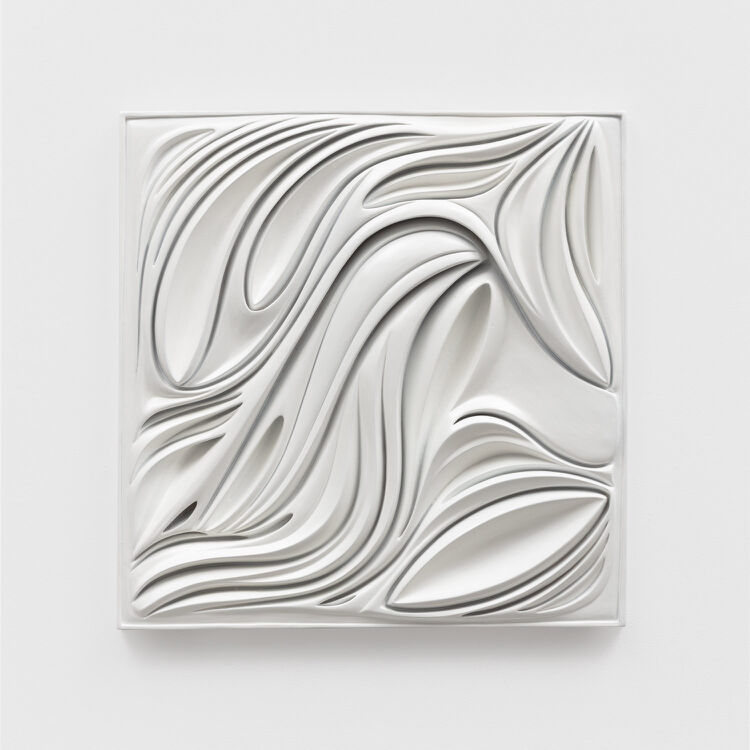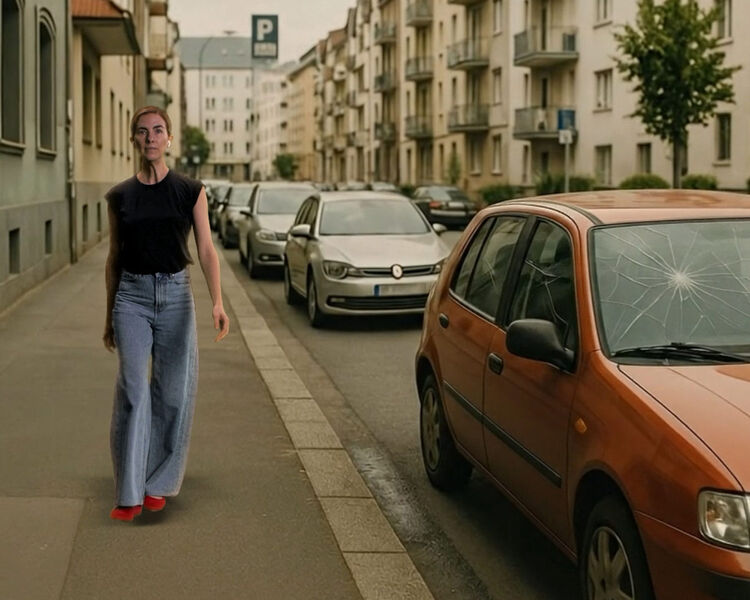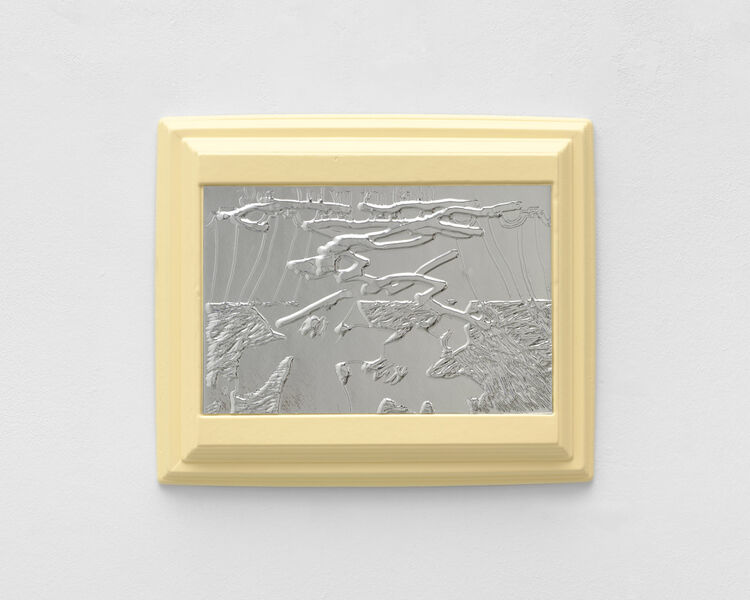I can't see you coming
Opening Wednesday, 20.10.2021 – 7–9 pm
21.10. – 28.11.2021
In Virginia Woolf’s novel To the Lighthouse, the titular edifice represents a site of desire that may only be reached with great difficulty. For the protagonists, caught in a web of social and family conventions, the lighthouse engenders projections in their stream of consciousness –while its beam is only able to capture fragments of life in a house on the British coast, the title implying both direction and a homage. If Manuela Leinhoß and Ivan Seal have chosen this text as the fulcrum of their joint exhibition, it is founded on a desire to provide the evident formal and content-related proximity of their work with an open and flexible structure, “an island where we can meet.”
She asked him what his father’s books were about. “Subject and object and the nature of reality, ” Andrew had said. And when she said, Heavens, she had no notion of what that meant. „Think of a kitchen table then, ” he told her, “when you’re not there.”
Just as Woolf’s novel is a kind of chamber piece (the plot unfolds almost entirely within and around the house, or within the protagonists’ own heads), the motifs in Ivan Seal’s paintings and Manuela Leinhoß’s sculptures and installations likewise derive from the domestic realm. Vessels, furniture, fabrics, and carpets nevertheless lead a life of their own in both of their work, literally animated and possessing inherent potential for further growth. For example, the extra-long shower curtain, reminiscent of the flyaway of a bridal veil, the light switch that merges with a spherical loudspeaker to become a hybrid creature, or the leathery-looking papier-mâché skin permeated by the fine veins of leaves that wraps around a metal frame with a suitcase handle. With many of Leinhoß’s objects, it remains open as to whether they are in the process of becoming or falling apart, precise geometric structures contrast with soft textiles, fragile vibrant surfaces with lacquered metal supports.
Seal likewise places the objects he depicts – anthropomorphic vessels, bric-a-brac figurines, bouquets of flowers, and also a skull guarded by a small dog – on plinths, pedestals, shelves, and more recently cat trees. Against pastel sfumato backgrounds, the impasto oil paint generates a pronounced sculptural effect – swatches of color, streaks, and globs of paint crowd together on a ship setting sail, holding on with difficulty, about to fall overboard.
Paint is the real protagonist in Ivan Seal’s paintings, seeming to repeatedly state: I too can also become something completely different! Meanwhile the fingerprints around the edge of some paintings represent both a signature (“Seal fecit”) and a negation of illusion.
So with the house empty and the doors locked and the mattresses rolled round, those stray airs, advance guards of great armies, blustered in, brushed bare boards, nibbled and fanned, met nothing in bedroom or drawing-room that wholly resisted them but only hangings that flapped, wood that creaked, the bare legs of tables, saucepans and china already furred, tarnished, cracked.
The idiosyncratic transformed into the eerie is yet another element linking the work of Manuela Leinhoß and Ivan Seal. In both it is snapshots, fragments, or substitutes for a greater but ambiguous narrative that are condensed into sometimes grotesque imagery: putti dancing on top of an impressionistically painted urn, a (death?) bell hanging from a cross positioned diagonally across the image, a piece of fabric hovering over a carpet and frozen in motion, and a chair that welcomes potential users with a hostile set of spikes.
One painting features a tower-like construction, surreal miniature architecture decorated in a harlequin pattern, a hybrid viewing platform, bunker, and dwelling – a possible meeting point, a lookout post, or a loophole to another reality? Something only the artists and the cats know.
[…] and all sorts of waifs and strays of things besides. A washerwoman with her basket; a rook; a red-hot poker; the purples and grey-greens of flowers: some common feeling which held the whole together.
Text: Bettina Klein
Virginia Woolf, To the Lighthouse, London 2004, p. 31
Ibid., p. 151
Ibid., p. 2214
In Virginia Woolfs Roman To the Lighthouse repräsentiert der Leuchtturm einen nur unter großen Schwierigkeiten erreichbaren Sehnsuchtsort. Im Bewusstseinsstrom der handelnden Figuren, die in einem Geflecht von gesellschaftlichen und familiären Konventionen gefangen sind, ist er Anlass für Projektionen – während die Lichtkegel seiner Scheinwerfer nur Fragmente des Lebens in einem Haus an der britischen Küste erfassen.
Der englische Originaltitel impliziert, im Gegensatz zur deutschen Übersetzung Die Fahrt zum Leuchtturm neben einer Richtungsangabe auch eine Widmung. Wenn Manuela Leinhoß und Ivan Seal diesen Text als Dreh- und Angelpunkt für ihre gemeinsame Ausstellung gewählt haben, so steht dahinter der Wunsch, der offensichtlichen formalen und inhaltlichen Nähe ihrer Arbeiten eine offene und flexible Struktur zu geben, „eine Insel, auf der wir uns treffen können“.
Sie hatte ihn gefragt, wovon die Bücher seines Vaters handelten. „Vom Subjekt und Objekt und dem Wesen der Wirklichkeit“ hatte er geantwortet, und als sie sagte, Himmel, sie habe keine Ahnung was das bedeute, „dann stellen Sie sich einen Küchentisch vor“, hatte er geantwortet, „wenn Sie selbst gar nicht da sind.“
So wie Woolfs Roman eine Art Kammerstück ist (fast die gesamte Handlung spielt sich im und um das Haus, bzw. in den Köpfen der Protagonisten ab) stammen auch die Motive von Ivan Seals Gemälden und Manuela Leinhoß‘ Skulpturen und Installationen aus dem häuslichen Bereich. Gefäße, Möbel, Stoffe und Teppiche führen in beider Arbeit jedoch ein Eigenleben, scheinen buchstäblich animiert zu sein und das Potential zum Weiterwachsen in sich zu tragen. So wie der überlange Duschvorhang, der an die Schleppe eines Brautschleiers erinnert, der Lichtschalter, der mit einem kugelrunden Lautsprecher zu einem Zwitterwesen verschmilzt oder die ledrig wirkende, mit feinen Blattadern durchzogene Pappmachéhaut, die sich um ein Metallgestell mit Koffergriff legt. Bei vielen von Leinhoß‘ Objekten bleibt offen, ob sie sich im Werden oder im Vergehen befinden, strenge geometrische Strukturen kontrastieren mit weichen Textilien, fragile, bewegte Oberflächen mit lackierten Metallgestellen.
Analog dazu platziert Seal die von ihm dargestellten Gegenstände – anthropomorphe Gefäße, Nippesfiguren, Blumenbouquets und auch einen von einem Hündchen behüteten Totenkopf – auf Sockeln, Podesten, Regalen und in letzter Zeit auch wiederholt auf Katzenbäumen. Vor Hintergründen in pastelligem Sfumato wirkt die pastos aufgetragene Ölfarbe besonders plastisch: Farbfächer, Schlieren, Batzen drängen sich auf einem in See stechenden Schiff, halten sich mit Müh und Not am Mast, gehen über Bord.
Die Farbe ist in Ivan Seals Malerei geradezu Akteurin, scheint beständig zu sagen: aus mir kann auch noch etwas ganz anderes werden! Und die Fingerspuren am Rand einiger Bilder sind gleichermaßen Signatur („Seal fecit“) wie Auflösung der Illusion.
So drangen denn in das leere Haus mit den verschlossenen Türen und den zusammengerollten Matratzen jene umherstreifenden Lüftchen, die Vorboten großer Heere, auftrumpfend ein, strichen über kahle Dielen, knabberten und fächelten, stießen in den Schlafzimmern wie im Wohnzimmer auf nichts, was ihnen völlig widerstand, sondern nur auf flatternde Behänge und knarrendes Holz, auf die kahlen Beine von Tischen, auf Pfannen und Porzellan, schon bepelzt von Staub, matt geworden, gesprungen.
Das Eigentümliche, das ins Unheimliche kippt, ist ein weiteres verbindendes Element in den Arbeiten von Manuela Leinhoß und Ivan Seal. Bei beiden sind es Momentaufnahmen, Fragmente oder Stellvertreter einer größeren, aber uneindeutigen Narration, die zu teils grotesken Bildern verdichtet werden: Putti, die auf einer impressionistisch bemalten Urne einen Reigen tanzen, ein (Toten-?)Glöckchen, das an einem diagonal das Bild querenden Kreuz hängt, ein über einem Teppich schwebendes, in der Bewegung erstarrtes Tuch oder ein Stuhl, der seine potentiellen Benutzer mit feindseligen Zacken empfängt.
Ein Bild zeigt eine turmartige Konstruktion, eine surreale, im Harlekinmuster dekorierte Miniarchitektur zwischen Aussichtsplattform, Bunker und Behausung – ein möglicher Treffpunkt, ein Ausblick oder ein Schlupfloch in eine andere Realität? Das wissen nur die Künstler und die Katzen.
[…] und dazu noch Endchen und Stückchen von allem Möglichen: eine Waschfrau mit ihrem Korb, eine Krähe; rot und gelbe Fackellilien; die dunkelvioletten und graugrünen Tönungen von Blumen; ein gemeinsames Gefühl, welches das Ganze zusammenhielt.
Text: Bettina Klein
Virginia Woolf, Die Fahrt zum Leuchtturm, Fischer Taschenbuch Verlag, 1982, S. 31Ebenda, S. 159
Ebenda, S. 236
